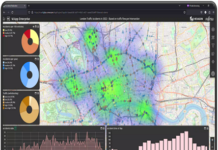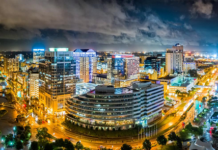
Three-year Initiative will Improve Traffic Flow & Safety, & Reduce Carbon Emissions Across Four IDOT Districts in Central & Southern Illinois
Iteris has been selected by the Illinois Department of Transportation (IDOT) Districts Six through Nine for various traffic signal synchronization projects, representing continued demand for Iteris’ specialized consulting services in a key geographic market.
Under the terms of the three-year contract, Iteris will develop optimized traffic signal coordination and timing plans at heavily travelled corridors in Central and Southern Illinois, and respond in the field to traffic signal and system operational issues, complaints, and other needs on short notice. The primary goal is to improve traffic flow and safety for all road users, including vehicles, buses, bicycles and pedestrians, by providing updated signal timing and signal synchronization along the corridors being analyzed. The signal coordination and timing work will include data collection, data analysis to generate optimal signal operation plans, implementation, and evaluation.
The program supports IDOT’s goals to significantly reduce statewide travel time, fuel consumption and greenhouse gas emissions, while improving safety and mobility, and the overall travel experience for all road users. By reducing delays and stops on key corridors for passenger vehicles and heavy vehicles, the project will help reduce CO2 emissions and fuel consumption, which in turn will contribute to sustainable environmental and air quality improvements.
“We are proud to support IDOT’s goals of improving safety, mobility and sustainability for all road users in the state by embarking on this traffic signal synchronization project,” said Cliff Heise, regional vice president, Mobility Professional Services at Iteris. “This initiative expands on Iteris’ depth in traffic engineering and consulting services in the Midwest, and will maximize the effectiveness of the region’s traffic signal infrastructure, while improving air quality and reducing fuel consumption.”



















